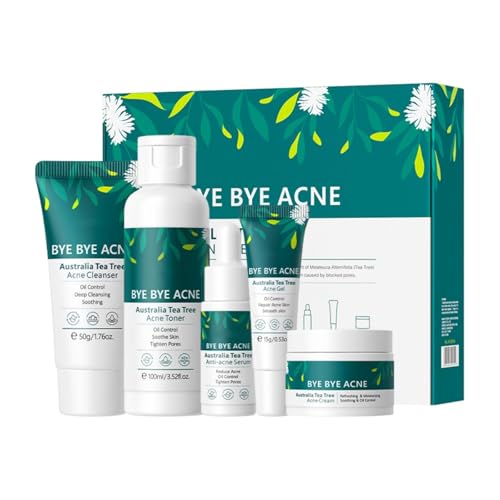Dealing with oily acne-prone skin can feel like an endless battle that leaves you frustrated and self-conscious. We understand how overwhelming it becomes when you’re constantly searching for the right products while your skin seems to rebel against everything you try. The good news? You don’t have to live with persistent breakouts and excess shine.
We’ve cracked the code on creating an effective skincare routine that actually works for oily acne skin. Through years of research and testing countless products we’ve discovered the perfect balance between controlling oil production and preventing breakouts without over-drying your skin.
The secret lies in understanding your skin’s unique needs and following a strategic routine that targets both excess sebum and acne-causing bacteria. Ready to transform your complexion? Let’s jump into the step-by-step routine that’ll give you the clear confident skin you’ve been dreaming of.
Understanding Oily Acne-Prone Skin
Before diving into our targeted skincare routine, we need to understand what makes oily acne prone skin so challenging to manage.
What Causes Oily Skin and Acne
Overactive sebaceous glands produce excess oil when hormones like androgens stimulate increased sebum production. Genetics play a major role in determining our skin’s oil production levels, with some people naturally producing 2-3 times more sebum than others.
Hormonal fluctuations during puberty, menstruation, pregnancy, and stress cause sebaceous glands to work overtime. These hormonal changes can increase oil production by up to 500% compared to normal levels.
Clogged pores develop when excess oil mixes with dead skin cells and bacteria, particularly Propionibacterium acnes. This combination creates the perfect environment for inflammatory acne lesions to form.
Inflammation occurs when our immune system responds to bacteria trapped in pores. The resulting inflammatory response causes the red, swollen bumps we recognize as acne breakouts.
Common Triggers That Worsen Breakouts
Harsh skincare products strip away natural oils, causing our skin to produce even more sebum to compensate. Over cleansing can increase oil production by 40% within just a few days.
Touching your face transfers bacteria and oils from your hands directly to your pores. We touch our faces an average of 16 times per hour without realizing it.
Dairy products contain hormones that can stimulate sebaceous glands in sensitive individuals. Studies show that people who consume more than 3 servings of dairy daily have 44% higher rates of acne.
High glycemic foods like white bread, candy, and processed snacks cause insulin spikes that trigger increased oil production. These foods can worsen acne within 24-48 hours of consumption.
Stress elevates cortisol levels, which directly stimulates oil glands and weakens our skin’s barrier function. Chronic stress can increase acne severity by up to 70%.
Wrong makeup choices using comedogenic products can clog pores and trap bacteria underneath. Oil based foundations and heavy concealers are particularly problematic for oily skin types.
Signs You Have Oily Acne-Prone Skin
Persistent shine appears on your T-zone within 2-3 hours of cleansing, even with powder or mattifying products. Your forehead, nose, and chin consistently look glossy throughout the day.
Enlarged pores are visible across your nose, cheeks, and forehead, particularly around the T-zone area. These pores often appear dark or clogged with sebaceous filaments.
Frequent breakouts include blackheads, whiteheads, papules, and pustules that appear regularly. You experience new acne lesions at least 2-3 times per week.
Makeup doesn’t last and tends to slide off or separate within a few hours of application. Foundation often looks patchy or oxidized by midday.
Blotting papers absorb important amounts of oil when pressed against your skin. You need to blot your face multiple times throughout the day to control shine.
Seasonal changes make your skin oilier during humid months and slightly less oily in winter. Summer heat and humidity can double your skin’s oil production.
Morning Skincare Routine for Oily Acne Skin
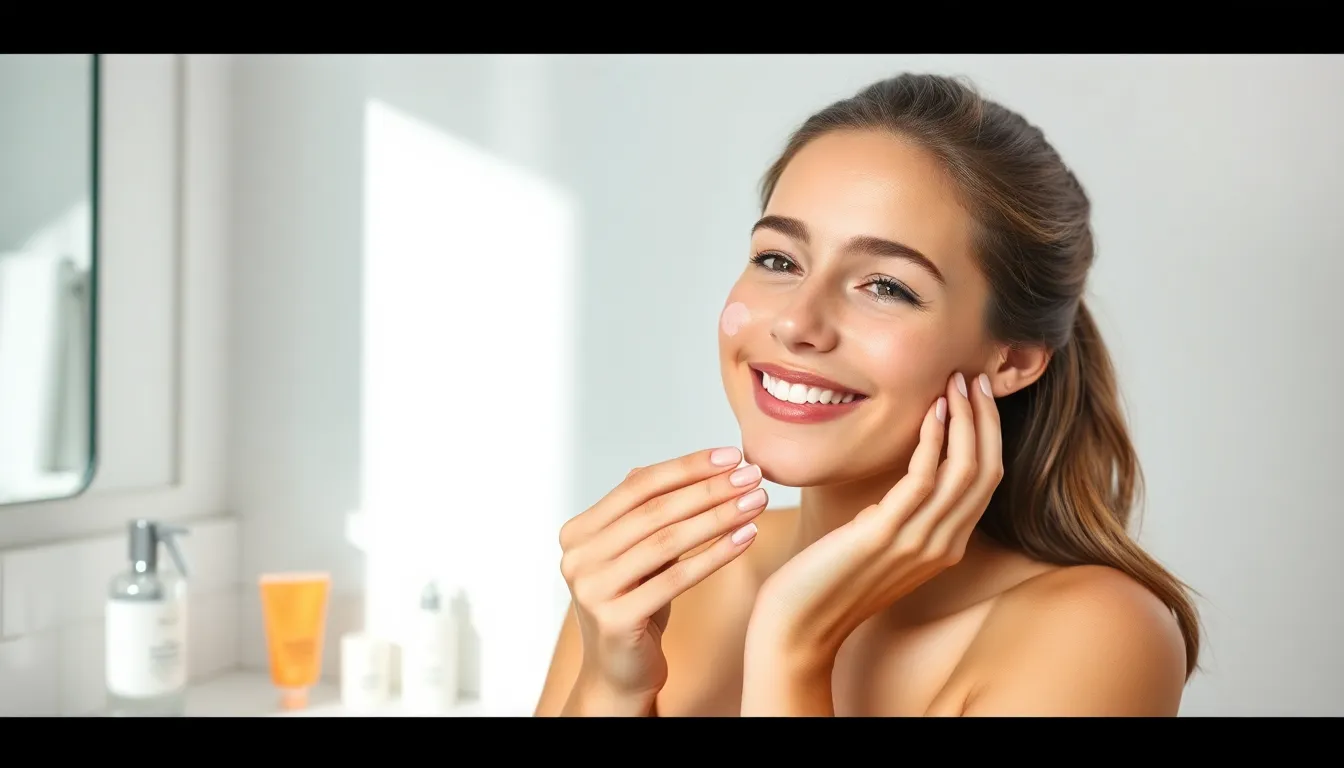
Starting your day with the right skincare routine sets the foundation for managing oily, acne-prone skin effectively. We’ve outlined five essential steps that work together to control oil production while preventing breakouts.
Step 1: Gentle Cleansing
Use a gentle, non-drying cleanser that’s specifically formulated for oily skin types. Salicylic acid cleansers work exceptionally well because they exfoliate dead skin cells and control excess oil production. We recommend looking for products with a pH between 5.5 and 6.5 to maintain your skin’s natural barrier.
Avoid harsh scrubbing that can irritate your skin and trigger more oil production. Instead, massage the cleanser gently with your fingertips for 30-60 seconds. Lukewarm water works best for rinsing, as hot water can strip your skin of essential oils.
Step 2: Toning and Balancing pH
Apply a toner containing salicylic acid, glycolic acid, or lactic acid to balance your skin’s pH levels after cleansing. These chemical exfoliants help reduce the appearance of enlarged pores while preparing your skin for subsequent products. We suggest using a cotton pad or applying the toner directly with clean hands.
Choose alcohol-free formulas to prevent over-drying your skin, which can lead to increased oil production. BHA toners work particularly well for oily, acne-prone skin because they penetrate oil-filled pores more effectively than AHA alternatives.
Step 3: Treatment Serums and Spot Treatments
Use a serum containing salicylic acid or niacinamide to regulate sebum production and reduce acne appearance. Niacinamide serums help minimize pore size and control oil without causing irritation. We recommend starting with 2-5% niacinamide concentrations for best results.
Apply benzoyl peroxide or retinol spot treatments directly to active breakouts for targeted acne control. These ingredients work by killing acne-causing bacteria and promoting cell turnover. Start with lower concentrations (2.5% benzoyl peroxide or 0.25% retinol) to build tolerance gradually.
Step 4: Lightweight Moisturizing
Apply a lightweight, non-comedogenic moisturizer to maintain your skin’s hydration barrier without clogging pores. Oil-free formulas with hyaluronic acid or ceramides work best for oily skin types. We emphasize that skipping moisturizer can actually increase oil production as your skin tries to compensate for dryness.
Look for gel-based or water-based moisturizers that absorb quickly without leaving a greasy residue. These formulations provide necessary hydration while allowing your skin to breathe throughout the day.
Step 5: Broad-Spectrum Sun Protection
Finish with a broad-spectrum sunscreen of at least SPF 30 to protect your skin from UV rays that can worsen oily skin and acne scarring. Mineral sunscreens with zinc oxide or titanium dioxide work well for acne-prone skin because they’re less likely to cause breakouts.
Choose oil-free or mattifying sunscreen formulas that won’t add extra shine to your complexion. Many modern sunscreens double as makeup primers, making them perfect for oily skin that struggles with makeup longevity.
Evening Skincare Routine for Oily Acne Skin

Our evening routine builds upon the morning foundation with deeper cleansing and targeted treatments. Nighttime offers the ideal opportunity to use stronger active ingredients that work while we sleep.
Step 1: Double Cleansing Method
Double cleansing removes stubborn makeup and accumulated oil more effectively than single cleansing alone. Start with a gentle cleansing oil to dissolve makeup, sunscreen, and surface impurities that water-based cleansers can’t tackle. Massage the oil into dry skin for 30 seconds before adding water to emulsify.
Follow immediately with a water-based cleanser formulated specifically for oily skin. Look for cleansers containing salicylic acid or glycolic acid to help reduce acne and prevent clogged pores throughout the night. These ingredients penetrate deeper into pores when they’re not competing with daytime products and environmental pollutants.
Step 2: Exfoliation (2-3 Times Weekly)
Exfoliation should occur 2-3 times weekly to avoid over-irritating oily acne skin. Use a gentle exfoliant containing alpha-hydroxy acids (AHAs) or beta-hydroxy acids (BHAs) to remove dead skin cells and unclog pores effectively. BHAs like salicylic acid work particularly well for oily skin because they’re oil-soluble and penetrate deeper into pores.
Apply your chosen exfoliant after cleansing but before any serums or treatments. Start with once weekly applications and gradually increase frequency as your skin builds tolerance. Skip exfoliation on nights when you’re using retinol or other strong active ingredients to prevent irritation.
Step 3: Targeted Acne Treatments
Targeted treatments work most effectively during evening hours when skin enters repair mode. Apply products containing benzoyl peroxide or retinol to target acne and reduce inflammation while you sleep. Benzoyl peroxide kills acne-causing bacteria and should be used on alternate nights from retinol products.
Retinol accelerates cell turnover and prevents clogged pores but can cause initial dryness or peeling. Begin with the lowest concentration available and use only twice weekly until your skin adapts. Always apply these treatments to clean, dry skin before moisturizer for maximum absorption.
Step 4: Hydrating Without Clogging Pores
Hydration remains crucial even for oily acne skin to maintain the skin barrier. Use a lightweight, non-comedogenic moisturizer that provides essential hydration without clogging pores or feeling heavy. Look for ingredients like hyaluronic acid, niacinamide, or ceramides that support skin health without adding excess oil.
Consider applying a night mask for extra hydration once or twice weekly, especially after using strong active ingredients. Use spot treatments for exact acne areas that need extra attention, applying them directly to blemishes after your regular moisturizer. These targeted approaches help address individual concerns while maintaining overall skin balance.
Essential Ingredients for Oily Acne Skin
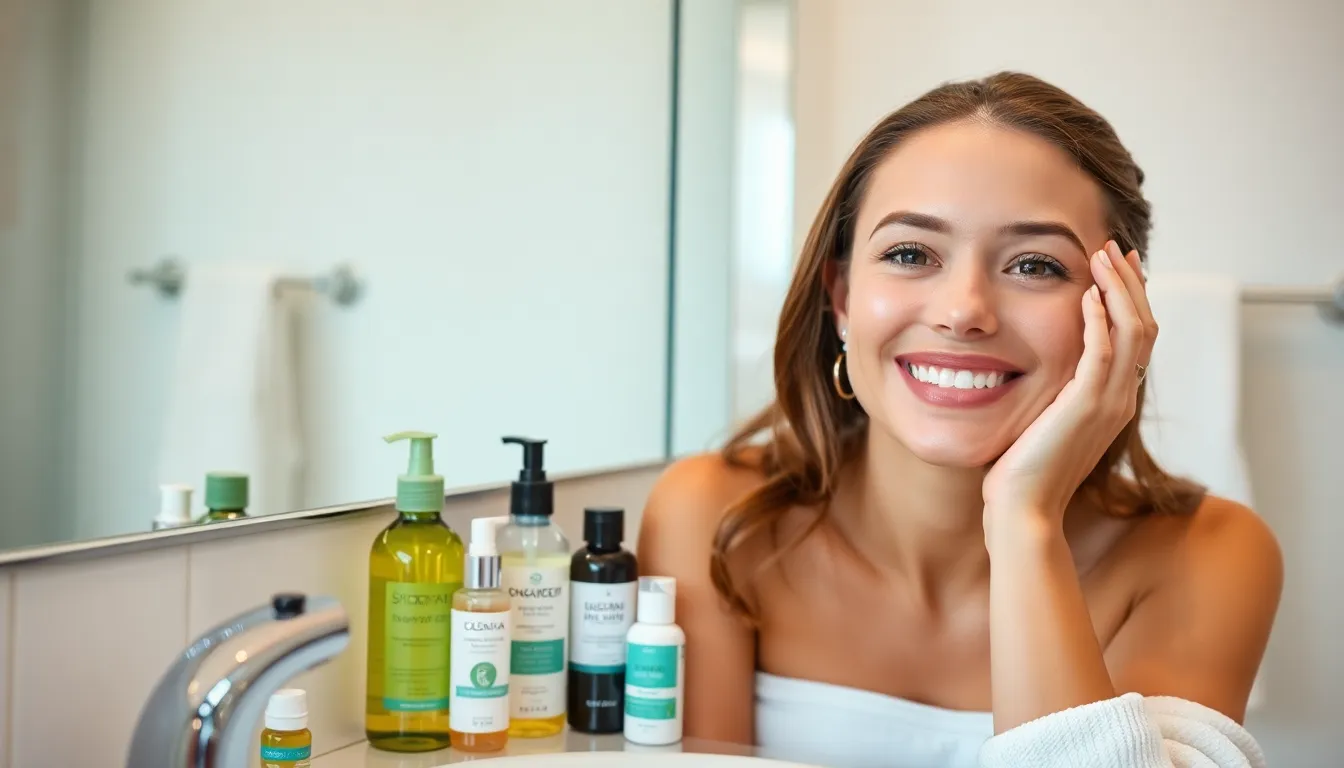
The right ingredients can make all the difference in transforming your oily, acne-prone skin. We’ll explore the powerhouse components that dermatologists recommend most for controlling excess oil and clearing breakouts.
Salicylic Acid for Pore Clearing
Salicylic acid penetrates deep into pores to dissolve the buildup of dead skin cells and excess oil that leads to blackheads and whiteheads. This beta hydroxy acid (BHA) works as a chemical exfoliant, gently removing the debris that clogs pores without harsh scrubbing. We recommend starting with a 0.5% to 2% concentration to avoid irritation while still achieving effective results.
Unlike physical exfoliants that can damage the skin barrier, salicylic acid helps clear pores from within by breaking down the bonds between dead skin cells. Products containing this ingredient work best when applied consistently to clean skin, allowing the acid to penetrate effectively. Many users see improvements in their pore appearance and overall skin texture within 2-4 weeks of regular use.
Benzoyl Peroxide for Bacteria Control
Benzoyl peroxide targets the bacteria that cause acne inflammation, specifically Cutibacterium acnes, which thrives in oily environments. This powerful ingredient works by releasing oxygen into the pores, creating an environment where acne-causing bacteria cannot survive. We suggest beginning with a 2.5% concentration, as studies show it’s nearly as effective as higher concentrations but with fewer side effects.
The antimicrobial properties of benzoyl peroxide make it particularly effective for inflammatory acne, including papules and pustules. Regular use helps reduce both existing breakouts and prevents new ones from forming by maintaining a bacteria-free environment in your pores. Users typically notice a reduction in active breakouts within 4-6 weeks of consistent application.
Niacinamide for Oil Regulation
Niacinamide, also known as vitamin B3, regulates sebum production while improving your skin’s overall barrier function. This versatile ingredient helps control the overactive sebaceous glands that contribute to oily skin and acne formation. We’ve found that niacinamide works exceptionally well for those who struggle with persistent oiliness throughout the day.
Studies demonstrate that niacinamide can reduce sebum production by up to 30% when used consistently over 12 weeks. The ingredient also helps minimize the appearance of enlarged pores and improves skin elasticity, making it a multitasking hero for oily, acne-prone skin. Most people can tolerate concentrations between 2% and 10% without experiencing irritation, making it suitable for sensitive skin types.
Retinoids for Cell Turnover
Retinoids accelerate cell turnover, helping to prevent the formation of comedones while improving overall skin texture and tone. These vitamin A derivatives work by increasing the rate at which your skin sheds dead cells, preventing them from accumulating and clogging pores. We recommend starting with a lower concentration retinol or consulting a dermatologist about prescription options for severe acne.
The cell renewal process promoted by retinoids helps fade post-acne marks and prevents future breakouts by keeping pores clear. Regular use of retinoids can transform your skin’s appearance over time, reducing both active acne and the scarring that often follows. Patience is key with retinoids, as most people see important improvements after 12-16 weeks of consistent use, though some purging may occur initially as the skin adjusts to increased cell turnover.
Products to Avoid in Your Skincare Routine
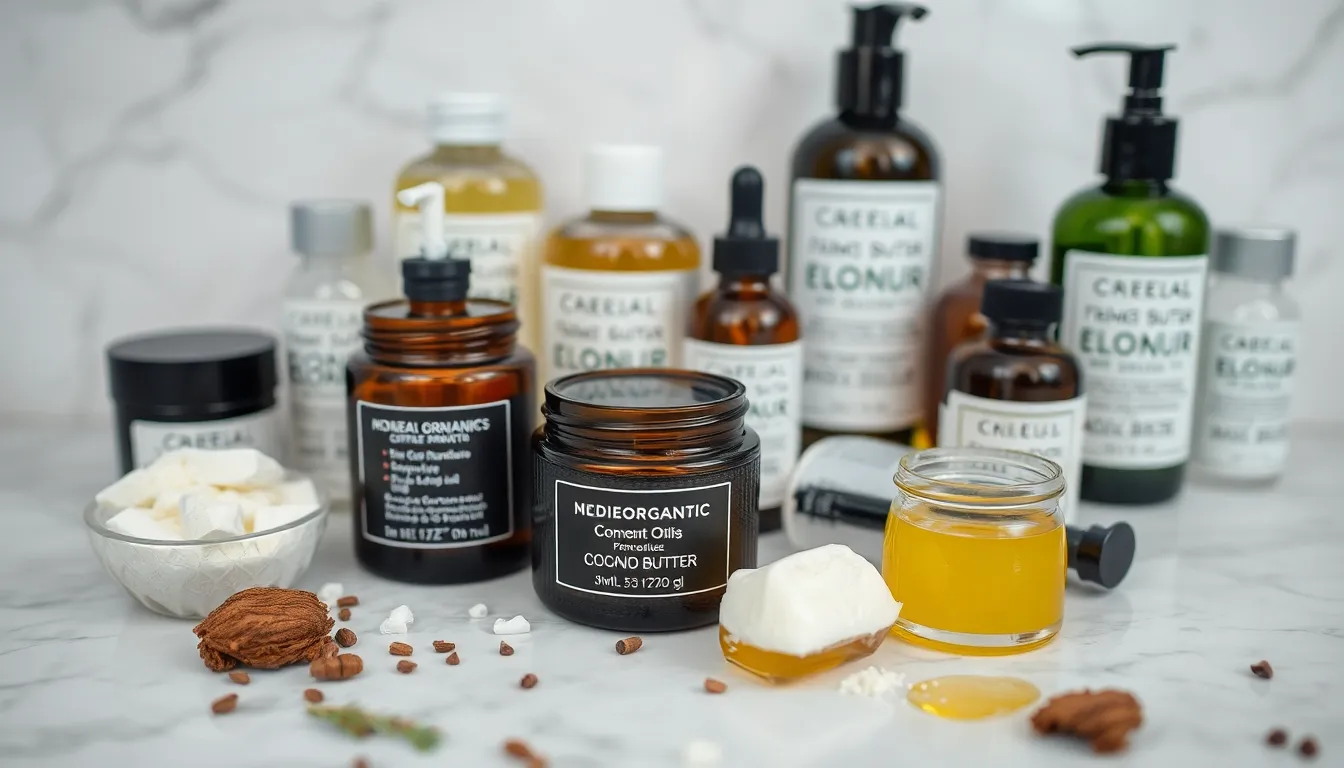
Just as important as knowing what to include in your oily acne skincare routine is understanding which products can sabotage your progress. We’ve identified three major categories of products that can worsen breakouts and increase oil production.
Heavy Oils and Comedogenic Ingredients
Comedogenic ingredients clog pores and create the perfect environment for acne to flourish. Cocoa butter ranks high on the comedogenic scale and can trap oil beneath your skin’s surface. Lanolin acts as a heavy occlusive agent that blocks pores in oily skin types. Corn oil contains oleic acid which disrupts your skin barrier and promotes inflammation.
Check product labels carefully for these pore-clogging culprits. Coconut oil scores a 4 out of 5 on the comedogenic rating scale. Wheat germ oil and avocado oil also rank highly for their pore-blocking potential. Isopropyl myristate appears in many cosmetics but consistently causes breakouts in acne-prone individuals.
Choose non-comedogenic alternatives that won’t interfere with your skin’s natural oil balance. Jojoba oil technically isn’t an oil but a wax ester that mimics your skin’s sebum. Squalane provides lightweight hydration without clogging pores. Mineral oil receives a zero comedogenic rating even though its heavy feel.
Harsh Scrubs and Over-Drying Products
Physical scrubs damage your skin barrier and can worsen acne inflammation. Walnut shell scrubs create microscopic tears that bacteria can enter. Sugar scrubs feel gentler but still cause micro-damage when used on active breakouts. Loofahs and rough washcloths spread bacteria across your face while irritating inflamed areas.
Alcohol-based toners strip away natural oils and trigger rebound oil production. Products containing denatured alcohol cause immediate dryness followed by increased sebum production. Witch hazel without proper formulation can be overly drying for daily use. Astringents with high alcohol content disrupt your skin’s pH balance.
Over-cleansing creates a cycle of dryness and excess oil production. Washing your face more than twice daily removes protective oils your skin needs. Foaming cleansers with sulfates can strip away too much natural moisture. Clay masks used daily will dehydrate your skin and prompt increased oil production.
Fragranced and Irritating Formulas
Synthetic fragrances trigger allergic reactions and inflammation in sensitive acne-prone skin. Essential oils like lavender and tea tree can cause contact dermatitis even though their natural origins. Citrus oils increase photosensitivity and can lead to dark spots from sun exposure. Perfumed products contain dozens of unlisted fragrance compounds that irritate compromised skin barriers.
Preservatives and stabilizers cause reactions in already inflamed acne-prone skin. Formaldehyde-releasing preservatives like DMDM hydantoin trigger contact allergies. Parabens can disrupt hormonal balance in some individuals with hormonal acne. Methylisothiazolinone causes severe reactions in people with existing skin sensitivities.
Choose fragrance-free formulations specifically designed for sensitive skin types. Products labeled “unscented” may still contain masking fragrances to hide chemical odors. Hypoallergenic doesn’t guarantee a product won’t cause reactions in acne-prone skin. Patch testing new products on your inner arm helps identify potential irritants before applying them to your face.
Weekly and Monthly Skincare Treatments
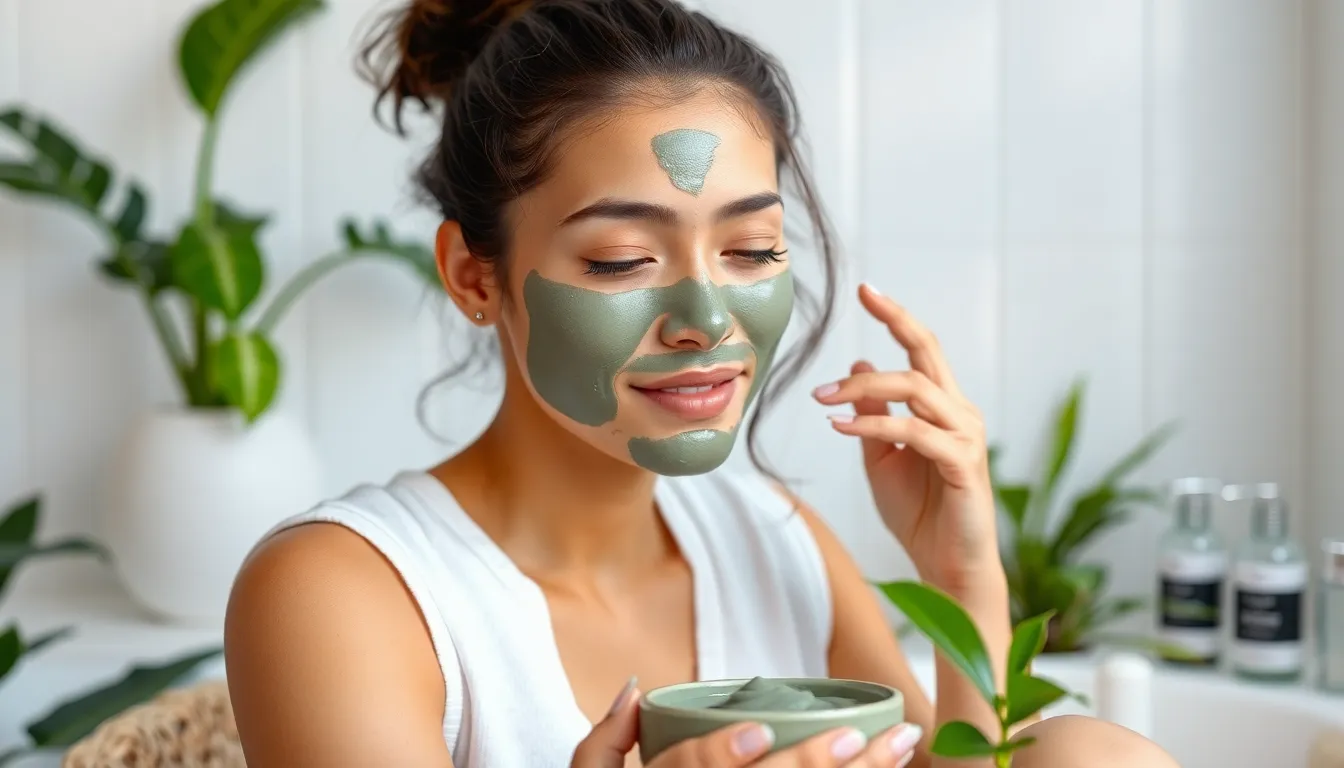
Beyond our daily routine, incorporating weekly and monthly treatments helps target stubborn oil production and accelerate skin clearing results. These intensive treatments work deeper than daily products to unclog pores and prevent future breakouts.
Clay Masks for Deep Pore Cleansing
Clay masks serve as powerful weekly treatments that absorb excess oil and deeply cleanse pores in ways our daily routine can’t achieve. Using these masks 1–2 times per week helps reduce the appearance of clogged pores while improving overall skin texture.
We recommend applying clay masks to clean, dry skin and leaving them on for 10–15 minutes until they begin to dry. Bentonite and kaolin clays work particularly well for oily skin types, drawing out impurities without over-drying. After removing the mask with lukewarm water, we should follow up with our regular moisturizer to maintain skin balance.
The oil-absorbing properties of clay masks make them especially effective for managing the T-zone area where oil production tends to be heaviest. Regular use helps minimize pore appearance and creates a smoother canvas for makeup application.
Chemical Peels for Skin Renewal
Monthly at-home chemical peels offer gentle exfoliation that promotes cell turnover and reduces acne marks more effectively than daily acids. These treatments work by removing dead skin cells and encouraging fresh, healthy skin to surface.
Glycolic acid peels provide excellent results for oily skin, penetrating deeply to unclog pores and fade post-acne discoloration. Salicylic acid peels specifically target oil-prone areas while being gentler on sensitive skin types. We should always follow package instructions carefully and perform a patch test before applying any peel to our entire face.
Starting with lower concentrations and gradually increasing strength helps our skin adapt to chemical exfoliation. Most at-home peels require 2–5 minutes of contact time, followed by thorough rinsing and immediate moisturizer application.
The key to successful peeling lies in consistency rather than intensity. Monthly treatments provide steady improvement without overwhelming our skin’s natural healing processes.
Professional Treatments Worth Considering
Professional treatments offer advanced answers that go beyond what we can achieve at home, providing deeper cleansing and targeted oil control. These services should complement our daily routine rather than replace it.
Deep cleansing facials with extraction help remove stubborn blackheads and whiteheads that resist our home care efforts. Licensed estheticians can safely perform extractions while applying professional-grade masks to minimize oil and congestion. We recommend scheduling these treatments every 4–6 weeks for optimal results.
Light chemical peels performed by dermatologists or licensed estheticians provide deeper exfoliation than at-home versions. These professional-grade treatments promote faster skin renewal and can address more severe acne scarring or hyperpigmentation.
Microdermabrasion offers gentle mechanical exfoliation that removes dead skin cells while improving skin texture. This treatment works particularly well for those who prefer physical exfoliation over chemical peels.
LED light therapy uses blue and red light wavelengths to kill acne-causing bacteria and reduce inflammation throughout the skin. Blue light targets P. acnes bacteria while red light calms existing breakouts and promotes healing. These treatments require multiple sessions for best results but offer a gentle, non-invasive approach to acne management.
Common Mistakes to Avoid
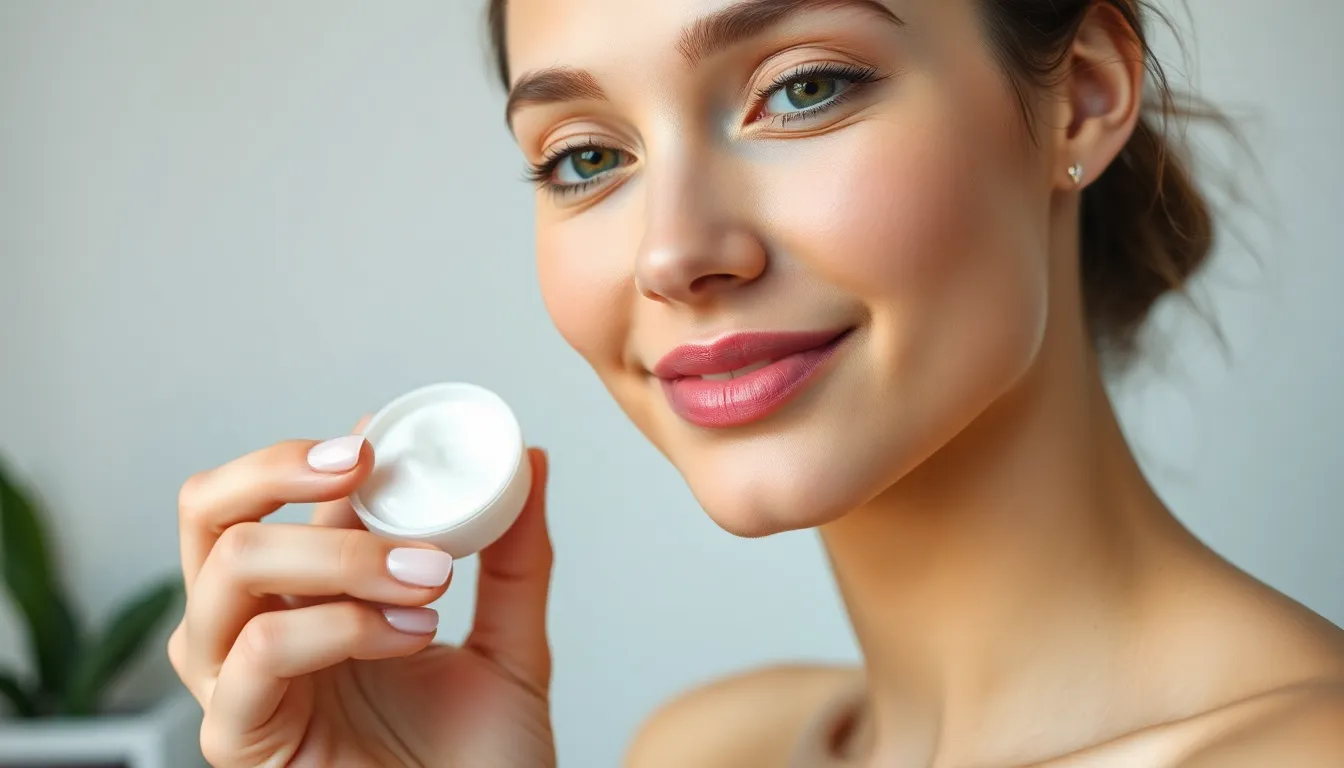
Even with the best intentions, we can unknowingly sabotage our oily acne skincare routine. These critical missteps often worsen the very problems we’re trying to solve.
Over-Cleansing and Stripping the Skin
Cleansing too frequently creates a counterproductive cycle that actually increases oil production. Many people with oily skin wash their face 3-4 times daily, believing this will control shine and prevent breakouts.
Harsh cleansers strip away the skin’s natural protective barrier, sending a signal to sebaceous glands to produce even more oil. This rebound effect typically occurs within 2-3 hours of over-cleansing, leaving skin both tight and greasy simultaneously.
Using products with high concentrations of alcohol, sulfates, or alkaline ingredients disrupts the skin’s pH balance. The ideal skin pH ranges from 4.5 to 5.5, but harsh cleansers can push it as high as 8.0, creating inflammation and irritation.
We recommend limiting cleansing to twice daily maximum, using gentle formulations with salicylic acid or other mild exfoliating ingredients. This approach removes excess oil and impurities without triggering the overproduction cycle that makes acne worse.
Skipping Moisturizer Due to Oiliness
Avoiding moisturizer because your skin feels oily is one of the most damaging mistakes in acne care. Dehydrated skin compensates by producing more sebum, which clogs pores and creates the perfect environment for breakouts.
Oily skin still needs hydration to maintain its barrier function and prevent transepidermal water loss. When we skip this crucial step, our skin becomes both oily and dehydrated, a combination that’s particularly difficult to manage.
Lightweight, oil-free moisturizers provide essential hydration without adding excess oils to the skin’s surface. Look for formulations with hyaluronic acid, glycerin, or niacinamide that deliver moisture while supporting oil regulation.
Apply moisturizer within 60 seconds of cleansing to lock in hydration and prevent the skin from feeling tight or uncomfortable. This simple step helps maintain the skin’s natural balance and reduces the likelihood of reactive oil production.
Using Too Many Active Ingredients at Once
Introducing multiple active ingredients simultaneously overwhelms the skin and often leads to irritation, redness, and increased sensitivity. Common combinations like retinol, benzoyl peroxide, and salicylic acid used together can cause chemical burns and severe dryness.
Start with one active ingredient and use it consistently for 2-4 weeks before adding another product to your routine. This gradual approach allows your skin to build tolerance and helps you identify which ingredients work best for your exact needs.
Layer active ingredients properly by applying them from thinnest to thickest consistency, waiting 10-15 minutes between applications. Never combine vitamin C with retinol in the same routine, as this combination can cause irritation and reduce the effectiveness of both ingredients.
Monitor your skin’s response carefully when introducing new actives, watching for signs of over-exfoliation like excessive dryness, peeling, or increased breakouts. These symptoms indicate you need to scale back and give your skin time to recover before proceeding.
Building Your Routine Gradually
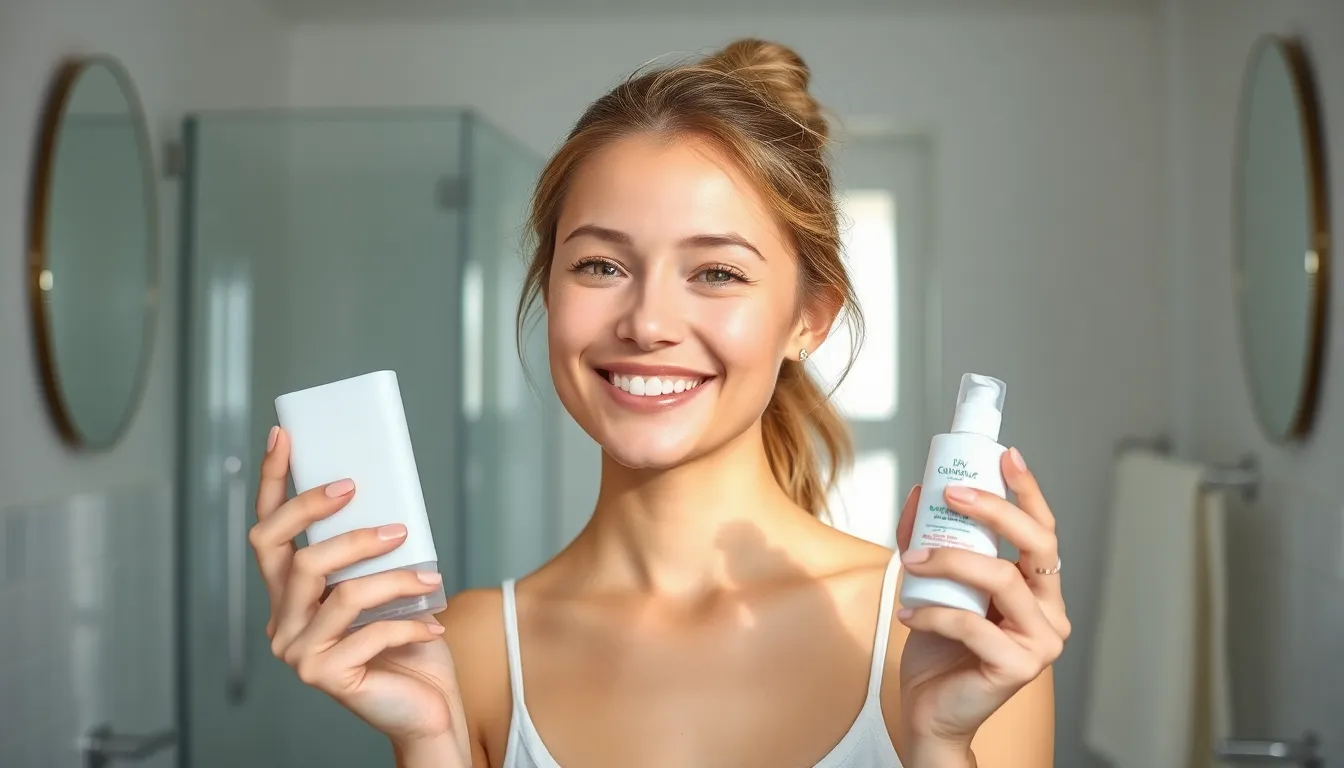
Starting a new skincare routine can overwhelm your skin if you introduce too many products at once. We recommend a phased approach that allows your skin to adjust while building an effective regimen for long-term results.
Week 1-2: Basic Cleanse and Moisturize
Cleansing forms the foundation of every successful oily acne routine. We suggest starting with a gentle, non-comedogenic cleanser containing salicylic acid to help exfoliate dead skin cells and reduce excess oil production. Use this cleanser twice daily – once in the morning and once before bed.
Moisturizing prevents your skin from overcompensating with excess oil production. Choose a lightweight, oil-free moisturizer that won’t clog your pores or feel heavy on your skin. Apply this after cleansing both morning and night to maintain proper hydration levels.
Focus on consistency during these first two weeks rather than adding more products. Your skin needs time to adjust to the new routine and establish a balanced moisture barrier.
Week 3-4: Adding Treatment Products
Toners help balance your skin’s pH levels while providing additional oil control benefits. Look for toners containing salicylic acid, glycolic acid, or lactic acid to help regulate sebum production. Apply the toner after cleansing but before moisturizing.
Treatment serums target exact skin concerns with concentrated active ingredients. We recommend incorporating serums with azelaic acid or niacinamide to combat inflammation and control excessive oil production. Start by using these products every other day to gauge your skin’s tolerance.
Acne treatments provide targeted action against existing breakouts and future prevention. Introduce benzoyl peroxide or retinol products gradually, beginning with lower concentrations and less frequent application. These powerful ingredients can cause dryness or irritation if used too aggressively at first.
Month 2 and Beyond: Fine-Tuning Your Routine
Product adjustments become necessary as your skin responds to the established routine. We recommend evaluating which products deliver the best results and modifying concentrations or application frequency accordingly. Some people may need stronger formulations while others benefit from gentler approaches.
Sun protection completes every effective daytime skincare routine for oily acne prone skin. Choose a lightweight, non-greasy sunscreen with at least SPF 30 to protect against UV damage that can worsen acne scarring and hyperpigmentation. Apply this as the final step in your morning routine.
Regular assessment helps optimize your skincare results over time. Track your skin’s progress through photos or a skincare journal to identify which products and techniques work best for your unique skin needs.
Budget-Friendly vs. High-End Options

We’ve tested countless products across every price range to help you build an effective routine without very costly. The truth is, you don’t need to spend hundreds of dollars to achieve clear, healthy skin.
Drugstore Heroes for Oily Acne Skin
CeraVe’s salicylic acid cleanser stands out as our top budget pick, effectively removing excess oil while maintaining the skin barrier. This gentle foaming formula costs under $15 and delivers the same pore-clearing benefits as products triple the price.
Basic oil-free moisturizers from drugstore brands provide essential hydration without adding unwanted shine. These lightweight gel formulas are specifically formulated for oily, acne-prone skin and remain non-comedogenic.
Affordable niacinamide serums have become drugstore heroes, offering 10% concentrations that rival high-end alternatives. These serums reduce inflammation and control sebum production for just a fraction of premium prices.
Benzoyl peroxide spot treatments deliver reliable results at budget-friendly costs, with 2.5% formulations proving just as effective as stronger concentrations. Many dermatologists recommend these over expensive targeted treatments.
When to Invest in Premium Products
Advanced formulations justify higher price points when they offer superior delivery systems or gentler active concentrations. Encapsulated retinol products, for example, provide nighttime rejuvenation with reduced irritation compared to basic retinoid formulas.
Dermatologist-approved serums with higher concentrations of active ingredients can benefit those with stubborn acne or sensitive skin. These premium options often feature refined textures that layer better under makeup and cause less irritation.
Sensitive or highly reactive skin responds better to high-end products that use advanced technology to minimize adverse reactions. Premium brands invest in research to create gentler formulations that deliver results without compromising skin comfort.
DIY Treatments That Actually Work
Diluted apple cider vinegar toners show promise for oily acne skin, though we recommend extreme caution due to their high acidity levels. Always dilute with water at a 1:3 ratio and patch test before applying to your entire face.
Honey masks provide gentle antibacterial effects that can complement your regular routine. Raw honey contains natural enzymes that help reduce inflammation without the harsh side effects of synthetic ingredients.
Important limitations apply to all DIY treatments, as they cannot replace proven clinical ingredients like salicylic acid, benzoyl peroxide, or niacinamide. These homemade options work best as occasional supplements to your established routine rather than primary treatments.
Monitoring Progress and Adjusting Your Routine
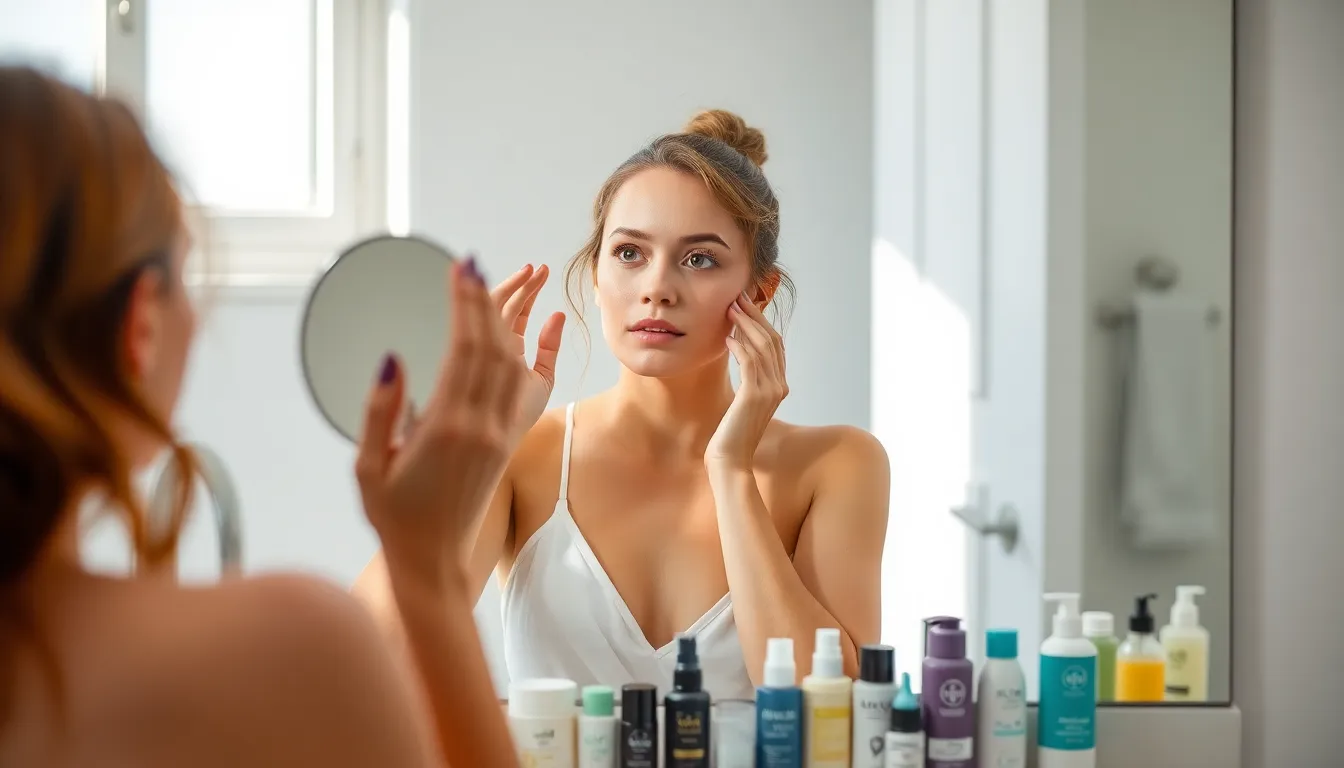
Success with oily acne skincare requires patience and careful observation. We need to track our skin’s response to determine what’s working and what needs adjustment.
Tracking Skin Changes and Improvements
Document your skin’s condition weekly to identify patterns and improvements. Take photos in natural lighting at the same time each day to capture accurate changes in oil production and breakout frequency.
Monitor oiliness levels throughout the day using blotting papers to measure how quickly shine returns. Count the number of blotting papers you use daily during your first week and compare this to subsequent weeks.
Track breakout frequency and severity by noting new pimples, their locations, and how long they take to heal. Keep a simple log noting dates when breakouts occur and their intensity on a scale of 1-10.
Observe pore appearance and skin texture changes, particularly in your T-zone where oiliness is typically most prominent. Notice whether your pores appear smaller and less visible over time.
Record any irritation or sensitivity that occurs when introducing new products. Note which products cause redness, burning, or excessive dryness so you can adjust accordingly.
When to Modify Your Skincare Routine
Adjust your routine after 4-6 weeks if you’re not seeing the improvements you expected in oil control or acne reduction. This timeframe allows your skin to fully adapt to new products and show meaningful results.
Reduce active ingredients if your skin becomes too dry, irritated, or sensitive during the adjustment period. Scale back to every other day application or lower concentration formulas until your skin tolerance improves.
Increase treatment frequency when your skin tolerates current products well but you need stronger results. Add an extra application of salicylic acid toner or benzoyl peroxide treatment gradually.
Switch cleansers if your current one leaves your skin feeling tight or doesn’t control oil effectively throughout the day. Look for gentler formulas if you experience dryness or stronger ones if oil persists.
Modify seasonal adjustments when weather changes affect your oil production patterns. Use lighter moisturizers during humid months and add hydrating serums during dry winter periods.
Signs It’s Time to See a Dermatologist
Persistent severe acne that doesn’t improve after 6-8 weeks of consistent routine use indicates you may need prescription treatments. Cystic acne, nodules, or inflammatory lesions require professional medical attention.
Excessive oiliness that continues even though using appropriate salicylic acid and niacinamide products suggests underlying hormonal or genetic factors. Dermatologists can prescribe stronger treatments or investigate root causes.
Skin irritation or sensitivity that doesn’t resolve when you reduce product frequency or concentration needs professional evaluation. Persistent redness, burning, or peeling may indicate contact dermatitis or other conditions.
Scarring or hyperpigmentation from previous breakouts requires targeted professional treatments like chemical peels or laser therapy. These concerns don’t typically resolve with over-the-counter products alone.
Hormonal acne patterns that worsen around menstrual cycles or life changes often respond better to prescription treatments. Adult women experiencing jawline and chin breakouts particularly benefit from dermatological intervention.
Conclusion
Managing oily acne-prone skin doesn’t have to feel like an uphill battle. With the right knowledge and consistent approach we’ve outlined you’re now equipped to transform your skincare routine and achieve the clearer complexion you’ve been working toward.
Remember that skincare is a journey not a destination. Your skin will continue to evolve and so should your routine. Stay patient with the process monitor your progress and don’t hesitate to make adjustments when needed.
We’re confident that by following these evidence-based strategies and avoiding common pitfalls you’ll see meaningful improvements in your skin’s health and appearance. Trust the process stay consistent and celebrate the small victories along the way.
Frequently Asked Questions
What causes oily, acne-prone skin?
Oily, acne-prone skin is primarily caused by overactive sebaceous glands that produce excess oil. This overproduction is triggered by hormones, genetics, and hormonal fluctuations during puberty, menstruation, pregnancy, and stress. When excess oil combines with dead skin cells, it clogs pores and creates an environment where acne-causing bacteria can thrive.
What are the signs that I have oily, acne-prone skin?
Common signs include persistent shine throughout the day, enlarged pores, frequent breakouts, makeup that doesn’t last long, and the constant need for blotting papers. You may also notice increased oiliness during humid months and experience blackheads, whiteheads, or inflammatory acne lesions regularly.
What ingredients should I look for in skincare products for oily skin?
Key ingredients include salicylic acid for pore clearing, benzoyl peroxide for bacteria control, niacinamide for oil regulation, and retinoids for cell turnover. These dermatologist-recommended ingredients work together to control oil production, prevent clogged pores, and promote clearer skin when used consistently over time.
What products should I avoid if I have oily, acne-prone skin?
Avoid heavy oils and comedogenic ingredients like cocoa butter and lanolin, harsh scrubs that can irritate skin, and alcohol-based toners that over-dry. Stay away from products with synthetic fragrances and avoid using too many active ingredients at once, which can cause irritation and worsen breakouts.
How often should I cleanse oily skin?
Cleanse twice daily – morning and evening – with a gentle, non-comedogenic cleanser. Over-cleansing can strip the skin’s natural barrier, leading to increased oil production as your skin tries to compensate. Stick to a consistent routine and avoid harsh scrubbing motions.
Do I need to moisturize oily skin?
Yes, moisturizing is essential even for oily skin. Skipping moisturizer can lead to dehydration, causing your skin to produce even more oil to compensate. Choose lightweight, non-comedogenic moisturizers that won’t clog pores but will maintain your skin’s barrier function and prevent excessive oiliness.
How long does it take to see results from an oily skin routine?
Most people begin seeing improvements within 4-6 weeks of consistent use. Initial changes may include reduced oiliness and fewer new breakouts. However, significant improvements in skin texture and acne scarring may take 2-3 months. Patience and consistency are key to achieving lasting results.
Can I use DIY treatments for oily, acne-prone skin?
While some DIY treatments like diluted apple cider vinegar toners and honey masks can provide benefits, they should complement, not replace, proven clinical ingredients. DIY treatments may offer temporary relief but lack the research-backed effectiveness of formulated skincare products with active ingredients.
When should I see a dermatologist for my oily skin?
Seek professional help if you experience persistent severe acne, excessive oiliness that doesn’t improve with over-the-counter products, or skin irritation that doesn’t resolve. A dermatologist can provide prescription treatments, professional procedures, and personalized advice for stubborn skin concerns.
Are expensive skincare products better for oily skin?
Not necessarily. Many drugstore products contain the same active ingredients as high-end alternatives and can be equally effective. Focus on ingredient quality rather than price. However, premium products may offer superior delivery systems or gentler formulations that some people find more suitable for their skin.




